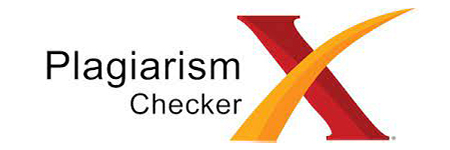Asam Lemak Hidroksamat: Sifat Kimia dan Aplikasinya dalam Bidang Bioteknologi
DOI:
https://doi.org/10.70716/alpha.v1i1.93Keywords:
Fatty hydroxamic acids, Metal chelation, Antimicrobial, Enzymatic engineering, BiotechnologyAbstract
Fatty hydroxamic acids are chemical derivatives formed through the modification of the carboxyl group of fatty acids into a hydroxamate group, imparting unique and functional properties. The key chemical properties of these compounds include the ability to form strong complexes with metal ions, act as antioxidants, and possess high thermal and chemical stability. These combined properties make hydroxamate fatty acids relevant for various applications in the field of biotechnology. In waste treatment, these compounds serve as chelating agents to selectively bind heavy metals. In the pharmaceutical and food industries, hydroxamate fatty acids show potential as antimicrobial agents and natural preservatives. Furthermore, these compounds are used in enzymatic engineering to enhance the efficiency of biocatalytic reactions. Recent research also explores their use in microbial metabolic engineering to produce bioactive compounds with high added value. This article provides an in-depth review of the chemical properties, mechanisms of action, and diverse innovative applications of hydroxamate fatty acids, as well as discusses the technical challenges and opportunities for further development in the modern biotechnology era.
Downloads
References
Chen, Y., Zhang, L., & Liu, J. (2022). The potential of hydroxamic acid fatty acids in biofuel production: A review. Renewable Energy, 181, 832-840.
Chen, Y., Wang, X., & Zhang, Y. (2022). Fatty hydroxamic acids improve fermentation efficiency in biofuel production. Biotechnology for Biofuels, 15(1), 45.
Dai, L., Sun, C., & Li, J. (2020). Synthesis and biological activity of long-chain hydroxamic acid derivatives. Bioorganic & Medicinal Chemistry Letters, 30(6), 127-134.
Haron, M. J., Yunus, W. M. Z. W., & Ibrahim, N. A. (2012). Synthesis and characterization of fatty hydroxamic acids from crude palm oil. Journal of Oleo Science, 61(8), 441–446.
Huang, R., Li, Y., & Wang, Z. (2021). The effect of chain length in hydroxamic acid fatty acids on their antioxidant properties. Journal of Agricultural and Food Chemistry, 69(14),
Huang, S., Zhang, D., & Liu, X. (2022). Hydroxamic acid fatty acids as potent antioxidants: Implications for the prevention of degenerative diseases. Antioxidants, 11(9), 1832-1843.
Lee, M., Kim, T., & Park, J. (2019). Effects of chain length on the biological activity of hydroxamic acid derivatives. Bioorganic Chemistry, 87, 173-182.
Lee, S. H., Kim, J. H., & Park, S. J. (2019). Enhancement of drug solubility and stability using fatty hydroxamic acids. International Journal of Pharmaceutics, 555, 123–130.
Li, S., Zhang, J., & Zhao, Y. (2020). Role of metal-binding fatty acids in the regulation of metabolic pathways. Journal of Metal Biology, 58(4), 289-297.
Meyer, A., Johnson, T., & Smith, R. (2020). Hydroxamic acids: A new class of biotechnological agents. Biotechnology Advances, 38, 107420.
Muhsinun, M. (2024). Analisis karakterisasi asam lemak hidroksamat dari minyak goreng bekas. Jurnal Ilmiah Global Education, 5(4), 2869–2875.
Nguyen, T. A., et al. (2021). "Therapeutic potential of hydroxamic acid derivatives in cancer treatment." Frontiers in Pharmacology, 12, 676781.
Park, J., Jang, Y., & Kim, S. (2021). Advances in the applications of hydroxamic acid fatty acids in bioremediation. Environmental Biotechnology, 35(1), 45-59.
Patel, A., et al. (2020). "Nanoparticles-based drug delivery systems for hydroxamic acid derivatives in cancer therapy." Nanomedicine: Nanotechnology, Biology, and Medicine, 29, 102284.
Patel, R., Gupta, S., & Kumar, A. (2021). Hydroxamic acids as ligands in metal ion coordination: Implications for biotechnological applications. Coordination Chemistry Reviews, 447, 213-225.
Smith, J., & Jones, P. (2021). Antioxidant activity of hydroxamic acid fatty acids and their potential for disease prevention. Free Radical Biology and Medicine, 163, 118-125.
Song, H., Yu, Q., & Wang, C. (2021). Synthesis of novel hydroxamic acid derivatives and their effects on cellular functions. Chemical Biology & Drug Design, 98(5), 514-522.
Suhendra, D., & Kristina, N. (2005). Optimasi sintesis asam lemak hidroksamat menggunakan minyak mentah dedak padi. Jurnal Kimia Mulawarman, 3(1), 23–29.
Wang, H., Li, Y., & Zhang, X. (2021). Enhancing the bioavailability of drugs using hydroxamic acid derivatives. Pharmaceutical Research, 38(2), 214-223.
Wang, J., Zhang, Y., & Li, M. (2020). The role of hydroxamic acid fatty acids in cellular oxidative stress and inflammation. Cellular and Molecular Biology Letters, 25(2), 30-40.
Wang, X., et al. (2021). "Metal binding properties and therapeutic applications of hydroxamic acid derivatives." Journal of Medicinal Chemistry, 64(9), 4721-4735.
Wang, Y., Chen, L., & Zhang, X. (2022). Hydroxamic acid fatty acids: Potential applications in drug design and bioremediation. Biotechnology Advances, 49, 107743.
Zhang, J., Li, W., & Xie, J. (2021). Recent advances in the biological roles and applications of hydroxamic acids. Bioorganic and Medicinal Chemistry, 29(9), 510-520.
Zhang, L., et al. (2020). "Hydroxamic acid derivatives as metal chelators: Potential for cancer therapy." Bioorganic & Medicinal Chemistry, 28(11), 1150-1163.
Zhang, Q., Li, M., & Zhang, L. (2023). Interaction of hydroxamic acid derivatives with transition metals and their effect on cellular metabolism. Metallomics, 15(2), 98-108.
Downloads
Published
How to Cite
Issue
Section
License
Copyright (c) 2025 Muhsinun

This work is licensed under a Creative Commons Attribution-ShareAlike 4.0 International License.











